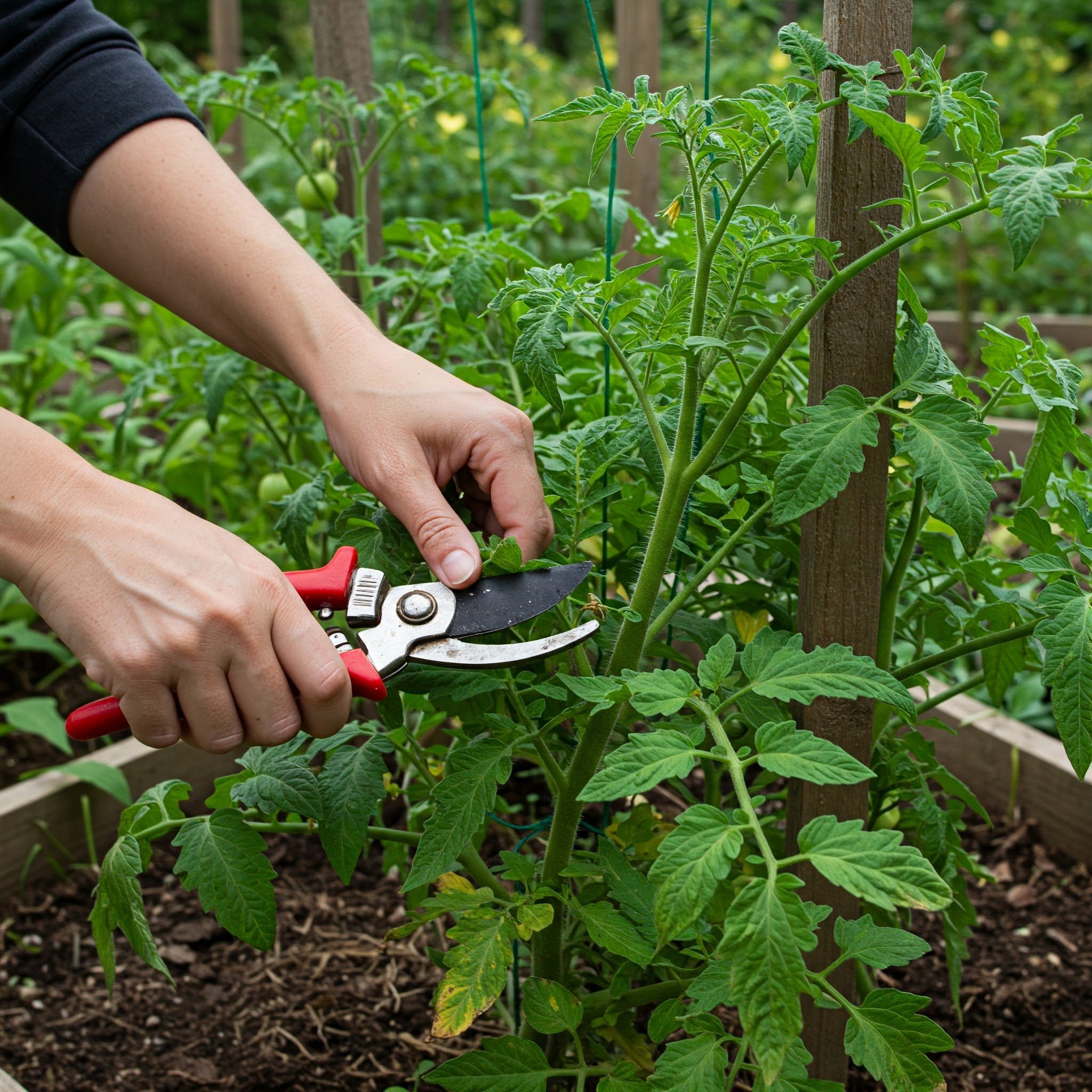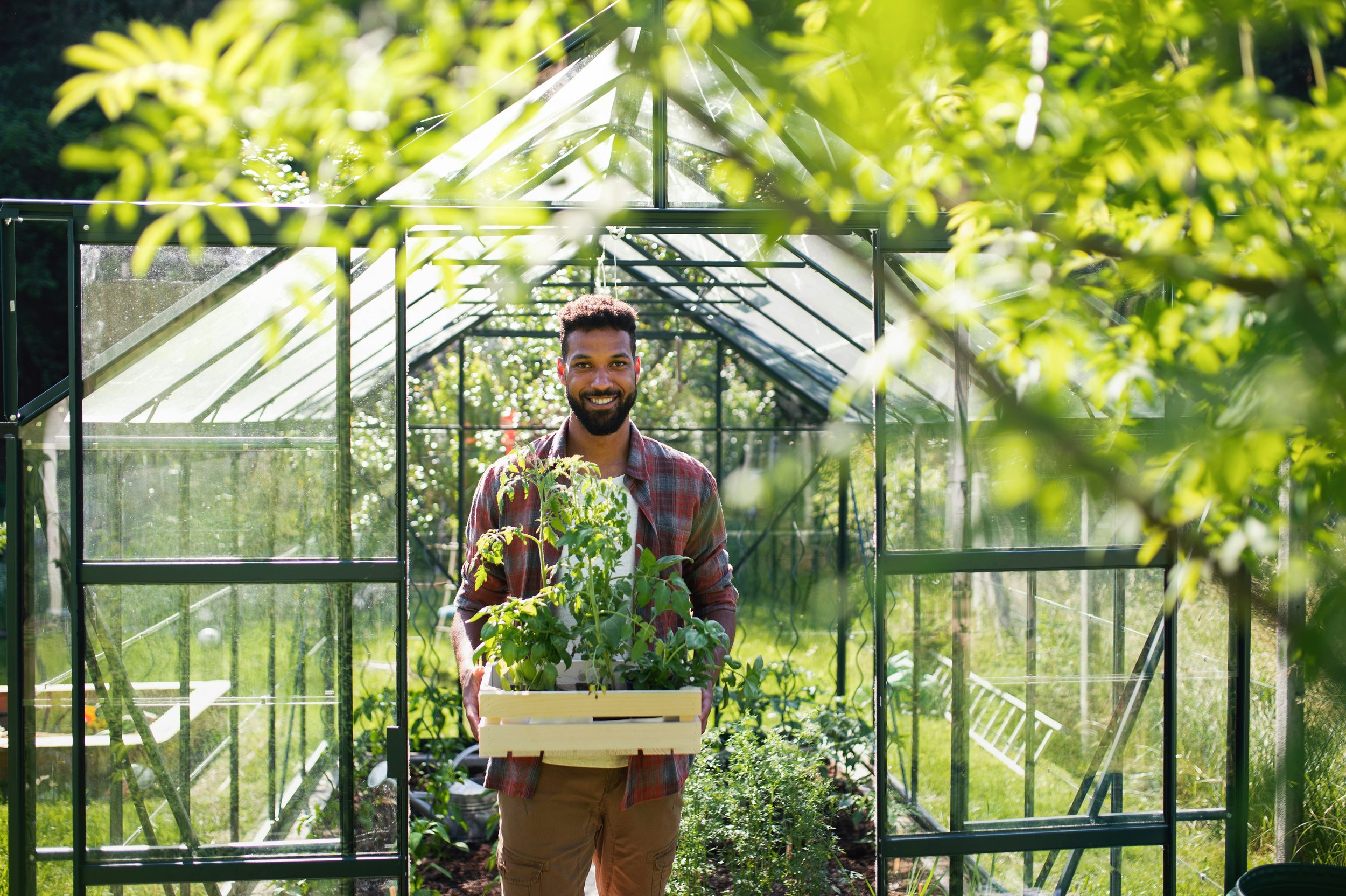When Is the Best Time to Plant Tomatoes?
Curious about the best time to plant tomatoes? Learn the ins and outs of tomato planting schedules, climate considerations, and tips for a bountiful harvest in this comprehensive guide.
Few things are as satisfying as a juicy, homegrown tomato straight from the vine. But to get those ripe, flavorful fruits, timing is everything! Knowing when is the best time to plant tomatoes can make all the difference in your harvest. Plant too early, and a late frost could ruin your seedlings; plant too late, and you might miss the window for that perfect, vine-ripened flavor.
In this guide, we’ll explore the best time to plant tomatoes based on factors like climate, soil temperature, and planting zone. Whether you’re growing a few plants on your patio or an entire vegetable garden, these tips will help you get your tomatoes off to a great start.
Understanding Tomato Growth Basics
Before we jump into planting schedules, it’s important to understand what makes tomatoes tick. Tomatoes are warm-weather plants—they thrive in sunlight, warmth, and consistent moisture. They’re also highly sensitive to frost and need plenty of time to grow and mature before producing those iconic red (or yellow, or green) fruits.
Tomato Growing Requirements
Temperature: Tomatoes need consistently warm temperatures, ideally between 70°F and 85°F during the day and no lower than 50°F at night.
Sunlight: Full sun is best. Aim for at least 6-8 hours of direct sunlight each day for optimal growth.
Soil Type: Well-drained, nutrient-rich soil with a slightly acidic pH between 6.0 and 6.8 is ideal.
Watering Needs: Tomatoes require consistent watering, but the soil should never be waterlogged.
Growing healthy tomatoes requires careful attention to several key factors that influence their development. Temperature plays a significant role; tomatoes thrive in warm conditions, with daytime temperatures between 70°F and 85°F, and nighttime temperatures should not drop below 50°F. Sunlight is equally important; tomatoes need at least 6-8 hours of direct sunlight each day to produce strong, healthy plants and fruits. For optimal growth, choose well-drained, nutrient-rich soil with a slightly acidic pH ranging from 6.0 to 6.8. Watering is crucial as well—tomatoes need consistent moisture, but be sure the soil is not waterlogged, as excessive moisture can lead to root rot and other issues. By providing the right conditions, you can enjoy a bountiful tomato harvest.
When Is the Best Time to Plant Tomatoes? Timing Is Everything
1. Understanding Last Frost Dates
The best time to plant tomatoes largely depends on your area’s last frost date. Since tomatoes are frost-sensitive, you’ll want to wait until the risk of frost has passed to plant them outdoors.
Check Your Local Frost Date: Look up your area’s average last frost date, usually available from local gardening centers or online resources like the USDA’s Plant Hardiness Zone Map.
Plant After the Last Frost: Once the danger of frost is behind you, you’re in the clear to plant. Typically, this falls between late April and mid-May for many regions, but always check your local frost date for accuracy.
2. Soil Temperature: The Secret to Strong Roots
Tomatoes need warm soil to establish healthy roots, and planting too early in cool soil can stunt their growth. The ideal soil temperature for tomatoes is at least 60°F.
Measure Soil Temperature: Use a soil thermometer to check. If it’s consistently at or above 60°F in the morning, it’s safe to plant.
Raised Beds and Black Plastic: If you want to warm up the soil faster, consider planting tomatoes in raised beds or using black plastic to retain heat.
Before planting tomatoes, it's essential to ensure the soil is warm enough to support healthy growth. Measuring soil temperature with a soil thermometer is a reliable way to check. If the temperature is consistently at or above 60°F in the morning, it’s a good indicator that it’s safe to plant. To help speed up the warming process, consider using raised beds or black plastic. Raised beds allow for better drainage and heat retention, which can help warm the soil faster, while black plastic acts as a heat retainer and weed suppressant, making it ideal for tomato plants. By taking these steps, you create the perfect environment for your tomatoes to thrive and grow strong.
Indoor Seed Starting: Getting a Head Start
If you’re eager to start your tomatoes early, consider starting seeds indoors about 6-8 weeks before your last expected frost date. This way, you’ll have strong, healthy seedlings ready to go as soon as the weather warms up.
Step-by-Step for Indoor Seed Starting
Start in Seed Trays: Fill seed trays or small pots with seed-starting mix. Plant seeds about 1/4 inch deep.
Provide Ample Light: Use grow lights or a sunny windowsill to give seedlings 12-16 hours of light per day.
Maintain Warmth: Keep the room temperature around 70°F for optimal germination.
Thin and Transplant: Once seedlings have grown a couple of sets of leaves, thin them out so the strongest plants remain.
When your last frost date is about two weeks away, start hardening off your seedlings—gradually exposing them to outdoor conditions to prepare them for transplanting.
Planting Tomatoes Outdoors: Key Considerations
Once you’ve reached your last frost date and the soil is warm, it’s time to plant your tomatoes outdoors. Here’s how to ensure a smooth transition and healthy growth.
1. Spacing and Depth
Tomatoes need space to grow, so don’t overcrowd them. Planting too closely can reduce airflow, leading to disease and stunted growth.
Spacing: Space plants about 24-36 inches apart to allow plenty of room for growth.
Plant Deep: Tomatoes can be planted deeper than most plants. Bury up to two-thirds of the stem, as roots will grow from the buried stem and lead to a stronger plant.
2. Adding Support Structures
Tomato plants need support to stay upright and bear fruit without bending or breaking. Add cages, stakes, or trellises at the time of planting to avoid disturbing the roots later.
Use Cages or Stakes: Place a cage around each plant or use stakes tied with soft ties to keep branches supported.
Train as They Grow: Encourage the plants to grow within the support structure by gently guiding the branches.
Best Tomato Planting Times by Region
Northern U.S.
For the northern United States, where spring can be chilly, the best time to plant tomatoes is usually between late May and early June. Since the growing season is shorter, choose fast-maturing tomato varieties like cherry or Roma tomatoes.
Southern U.S.
In the southern U.S., where warm weather arrives early, you can often start planting tomatoes as early as March or early April. However, keep in mind that extreme summer heat can stress tomatoes, so it’s ideal to get them in the ground as early as possible for a full growing season.
Midwest U.S.
The Midwest experiences variable spring weather, so aim for a mid-to-late May planting. By then, the risk of frost is lower, and the soil has had time to warm up.
Tomato Plant Care Tips for a Bountiful Harvest
Now that you know the best time to plant tomatoes, here are a few tips to keep your plants healthy and productive all season long.
1. Water Wisely
Tomatoes like consistent moisture but don’t do well in soggy soil.
Water at the Base: Water at the base of the plant to keep the leaves dry and prevent disease.
Deep Watering: Water deeply, about 1-2 inches per week, depending on rainfall.
2. Fertilize Carefully
Tomatoes are heavy feeders, so they’ll need a nutrient boost to produce lots of fruit.
Use Balanced Fertilizer: Apply a balanced fertilizer when planting, then switch to a phosphorus-heavy formula once fruiting begins.
Don’t Over-Fertilize: Too much nitrogen can lead to lush foliage but fewer tomatoes, so be cautious with fertilizer amounts.
3. Prune and Mulch
Pruning and mulching can help improve airflow, prevent disease, and conserve moisture.
Prune Suckers: Remove small shoots (suckers) that grow in the “V” between branches to focus the plant’s energy on fruiting.
Mulch Around the Base: Apply 2-3 inches of mulch to keep the soil moist and suppress weeds.
Conclusion
Planting tomatoes might seem like a simple task, but timing is everything when it comes to getting the best harvest. This guide on When Is the Best Time to Plant Tomatoes? has covered the essential timing tips, along with climate considerations, soil temperatures, and growing tips to ensure a healthy crop.
Whether you’re growing beefsteaks, cherries, or heirlooms, knowing the best time to plant and providing proper care will yield juicy, flavorful tomatoes you can enjoy all season long. So, mark your calendar, get your seeds or seedlings ready, and prepare for a garden full of vibrant, delicious tomatoes!
Read next: Why Are Your Tomato Leaves Curling? Causes and Fixes
Frequently Asked Questions
1. Can I plant tomatoes in pots or containers?
Absolutely! Just be sure to choose a large container (at least 5 gallons) and use high-quality potting mix. Container tomatoes will need more frequent watering than garden-planted ones.
2. How can I protect my tomatoes from a surprise frost?
If frost is predicted, cover your plants with a frost cloth or a blanket overnight. Remove the cover during the day to let them get sunlight and warmth.
3. What’s the best way to avoid tomato plant diseases?
Good airflow, proper spacing, and watering at the base of the plant are key to preventing disease. Also, rotate crops each year to avoid soil-borne pathogens.
4. Can I start tomatoes from seeds outdoors?
It’s possible in warm regions, but starting seeds indoors typically yields stronger plants with a head start on the season.
5. When will I start seeing ripe tomatoes?
Depending on the variety, most tomatoes will begin ripening 60-80 days after transplanting. Cherry tomatoes often ripen faster, while larger varieties take a bit longer.









